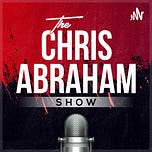Introduction: What Does It Mean to Be an Occupier?
An occupier is someone or something that controls a place where the people feel that control is not legitimate. In wars, it is the army that stays on land that isn’t theirs. In colonies, it is the empire that rules over a people without consent. When certain communities in America call the U.S. government an occupier, they are describing how it feels to live under laws they see as foreign to their way of life. This is not just about law enforcement; it is about identity, belonging, and power.
Parallel Realities: Dimension A and Dimension B
Imagine two mental worlds living in the same space. Dimension A is the internal life of the enclave, the community that rules itself through its own customs and codes. Dimension B is the external authority of the federal, state, and local government. These worlds share the same map but not the same rules. When they overlap, tension follows. This framework helps explain why the same event—a police raid, a federal arrest, even a simple patrol—can mean safety to one side and occupation to the other.
Enclaves in America: How They Work
An enclave is a community that sees itself as separate. It may be a Black inner-city neighborhood, a Latino district, an Orthodox Jewish suburb, a Mormon town, or a Chinatown. Inside these spaces, there is pride and autonomy. Outsiders may be allowed in, but they are not part of the dimension. Even rural areas with strong local identity—like parts of Appalachia—operate with suspicion toward outside interference. These enclaves might follow U.S. laws on paper, but the local codes matter just as much, sometimes more.
The Occupier’s Shadow
When someone from outside comes in with power—police, ICE, federal agents—it feels like an invasion. Popular culture captures this with the trope of an outsider cop on a reservation. This feeling is real. For many communities, outside enforcement is not help; it is intrusion. This explains why slogans like “All Cops Are Bastards” and “Snitches Get Stitches” hold meaning. They are not just anti-police—they are warnings to keep Dimension B out of Dimension A.
Baghdad: A Story About Layers of Power
After Saddam Hussein’s fall, Baghdad became a patchwork of warlords, each with their own rules. The U.S. Army was another authority above it all, but not part of it. When U.S. forces struck a warlord, locals saw it as an invasion—even if that warlord was cruel. Americans thought they were restoring order; locals felt occupied. This story mirrors the dynamic in American cities and enclaves. Two systems exist at once until one pierces the other.
Policing as Colonialism
When federal or state forces enter enclaves, they are often seen as colonizers. Their authority is not welcome. The outside power believes it is acting lawfully; the inside sees it as oppression. This is why defiance of the police is framed as resistance. To Dimension B, this is crime. To Dimension A, it is self-defense.
Autonomous Zones: Modern Reservations
Some enclaves go further by rejecting outside authority. Sanctuary cities ignore federal immigration laws. Seattle’s CHAZ claimed independence from police. Many neighborhoods act like reservations, policing themselves and resisting outside enforcement. The logic is simple: “We govern ourselves.”
Migration and New Autonomous Zones
Migration brings new enclaves. Syrian, Afghan, Somali, Persian, and other communities create tight-knit zones with their own codes. Some Somali areas are so concentrated they function like independent societies. Mexican-American neighborhoods in Los Angeles or the Southwest enforce “for us, by us” norms. These places build their own rules and distrust outside interference. Even cultural markers—like Go-Go music in DC—signal boundaries. A local once warned me at a Go-Go club: “You can come in, but I wouldn’t.” It was not about violence; it was about knowing the boundary.
The Warlord Mentality
Every enclave is territorial. It may not be lawless, but it governs itself. Outsiders crossing the line break the unwritten rule: this turf is not yours. Defiance of police is often seen by insiders as protecting their autonomy. From the outside, this is chaos; from the inside, it is loyalty.
Conclusion: Two Countries on One Map
The U.S. is many cultures on one map. Each believes in its right to self-rule. The government sees itself as the ultimate authority; enclaves see it as an occupier. Until these two realities reconcile, every clash will feel like colonizer versus colonized. The cry of occupation is not just rhetoric—it is the voice of communities guarding their own worlds within America’s borders.
This is why the concept of autonomy matters so deeply. America is not one dimension. It is two—and they are always on the verge of collision.
tl;dr
The provided text introduces "The Occupier Thesis," which argues that the U.S. government functions as an occupying force within its own borders, particularly when interacting with distinct cultural enclaves. These communities, such as Black inner-city neighborhoods or Orthodox Jewish suburbs, operate as "autonomous zones" with their own internal rules and moral codes, referred to as Dimension A. This internal logic often clashes with the external authority of federal, state, or municipal governments, known as Dimension B. The text likens this dynamic to post-Saddam Baghdad, where local "warlords" governed their territories independently of U.S. forces, and argues that policing by external authorities is perceived as colonialism or an intrusion into these self-governing spaces. Ultimately, the thesis suggests that America is not a single unified nation but a collection of cultures existing on one map, each striving for self-rule and viewing external enforcement as an act of occupation.













Share this post